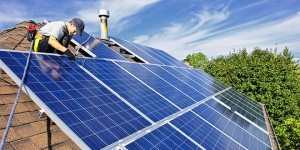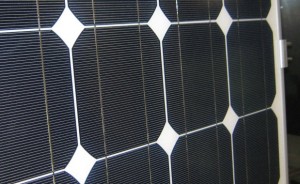There are three main types of photovoltaic solar panels for both commercial and residential use.
They are:
- Monocrystalline
- Polycrystalline
- Amorphous Silicon also called “Thin Film”
All three types of solar panels have both advantages and disadvantages depending on the end user’s budget, the size and type of environment where they are used and the expected output of the system to name a few.
Monocrystalline Photovoltaic Solar Panel
Made from a large crystal of silicon. Monocrystalline solar panels are the most efficient and most expensive panels currently available. Because of their high efficiency, they are often used in applications where installation square footage is limited, giving the end user the maximum electrical output for the installation area available.
Polycrystalline Photovoltaic Solar Panel

Characterized by its shattered glass look because of the manufacturing process of using multiple silicon crystals, polycrystalline solar panels are the most commonly seen solar panels. A little less efficient than monocrystalline panels, but also less expensive.
Amorphous Silicon “Thin Film” Photovoltaic Solar Panel
![]()
These panels can be thin and flexible which is why they are commonly referred to as “Thin Film” solar panels. Amorphous silicin solar panels are common for building integrated photovoltaics (BIPV) applications because of their many application options and aesthetics. They are cheaper and are not effected by shading. Drawbacks are low efficiency, loss of wattage per sq. ft. installed and heat retention.
They can be manufactured using silicon, copper indium diselenide (CIS) or cadmium telluride (CdTe).

